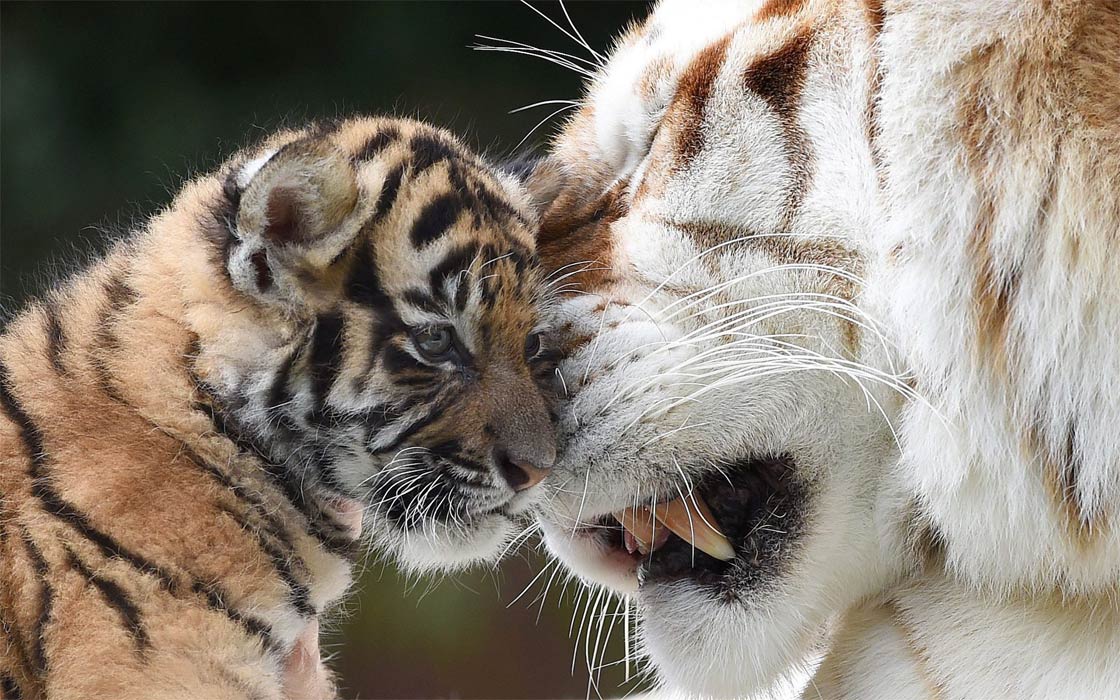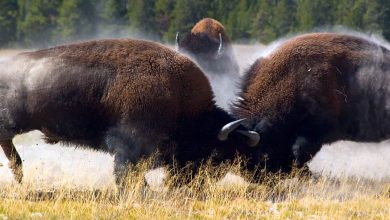Tiger (Panthera tigris)
With a roar that echoes through the jungle and a stripe pattern as unique as a fingerprint, the tiger is a magnificent creature that has captured the imagination of people for centuries. From the strength of its powerful paws to the grace of its movements, the tiger is an awe-inspiring symbol of power and beauty, inspiring tales of legend and wonder across cultures and continents. With its stunning coat and piercing gaze, the tiger is not just an animal, but an icon of the wild, a magnificent predator that reigns supreme in the hearts and minds of people everywhere.
The tiger (Panthera tigris) is a species of large cat that is native to a variety of habitats across much of Asia. It is the largest cat species in the world, with males weighing up to 300 kilograms (660 pounds) and females weighing up to 180 kilograms (400 pounds). Tigers have distinctive orange fur, which is striped with black, and their powerful bodies, which are built for hunting and fighting. They are carnivorous and prey on a wide variety of animals, including deer, wild boar, and buffalo.
Tigers are endangered, with fewer than 4,000 individuals remaining in the wild. They are threatened by habitat loss, poaching, and conflict with humans. Tigers have a complex social structure, with males and females living in separate territories and coming together only to mate. They are solitary animals and typically hunt alone, using their keen senses and stealth to surprise and overpower their prey.
Tigers play a significant role in the cultural and spiritual traditions of many Asian cultures, and have long been revered for their strength and beauty. However, their populations have declined dramatically in recent years due to a variety of factors, and conservation efforts are ongoing to protect and preserve this iconic species.

Taxonomy
The taxonomy of the tiger is as follows:
- Kingdom: Animalia
- Phylum: Chordata
- Class: Mammalia
- Order: Carnivora
- Family: Felidae
- Genus: Panthera
- Species: Panthera tigris
Tigers belong to the family Felidae, which includes all species of cats. Within the family, they are classified in the genus Panthera, which also includes lion, leopard, and jaguar. The tiger is the only species in the Panthera tigris subspecies. There are nine recognized subspecies of tiger, including the Bengal tiger, Siberian tiger, and South China tiger. These subspecies differ in their physical characteristics, distribution, and population size.

Subspecies
There are nine recognized subspecies of tiger, which are:
- Bengal tiger (Panthera tigris tigris)
This subspecies is found in India, Nepal, Bhutan, and Bangladesh, and is the most common subspecies of tiger. It is also known as the Indian tiger. - Siberian tiger (Panthera tigris altaica)
This subspecies is found in Russia, and is the largest subspecies of tiger. It is also known as the Amur tiger. - South China tiger (Panthera tigris amoyensis)
This subspecies is found in China, and is the most critically endangered subspecies of tiger. It is also known as the Chinese tiger. - Indochinese tiger (Panthera tigris corbetti)
This subspecies is found in Thailand, Laos, Vietnam, and Cambodia. It is also known as the Corbett’s tiger. - Malayan tiger (Panthera tigris jacksoni)
This subspecies is found in Malaysia, and is also known as the Malay tiger. - Sumatran tiger (Panthera tigris sumatrae)
This subspecies is found in Sumatra, Indonesia, and is the smallest subspecies of tiger.
Extinct subspecies:
- Bali tiger (Panthera tigris balica)
This subspecies is now extinct, and was found on the island of Bali in Indonesia. - Caspian tiger (Panthera tigris virgata)
This subspecies is now extinct, and was found in the Caspian region, including parts of Iran, Iraq, and Central Asia. - Javan tiger (Panthera tigris sondaica)
This subspecies is now extinct, and was found on the island of Java in Indonesia.
The physical characteristics, distribution, and population size of these subspecies vary. For example, the Bengal tiger is smaller and more slender than the Siberian tiger, and is found in a different part of the world. The South China tiger is the most critically endangered subspecies, with fewer than 20 individuals remaining in the wild. The Sumatran tiger is the smallest subspecies, and is found in a specific habitat on the island of Sumatra. All subspecies of tiger are endangered, with their populations facing threats such as habitat loss, poaching, and conflict with humans.

Extinct tiger subspecies
There are three subspecies of tiger that are now extinct: the Bali tiger, the Caspian tiger, and the Javan tiger.
Bali tiger (Panthera tigris balica)
The Bali tiger was a small subspecies of tiger that was found on the island of Bali in Indonesia. It is believed to have become extinct in the 1940s due to hunting and habitat loss.
Caspian tiger (Panthera tigris virgata)
The Caspian tiger was a subspecies of tiger that was found in the Caspian region, including parts of Iran, Iraq, and Central Asia. It is believed to have become extinct in the 1970s due to hunting and habitat loss.
Javan tiger (Panthera tigris sondaica)
The Javan tiger was a subspecies of tiger that was found on the island of Java in Indonesia. It is believed to have become extinct in the 1980s due to hunting and habitat loss.
All three of these subspecies were lost due to a combination of factors, including habitat loss, poaching, and conflict with humans. The loss of these subspecies is a tragic reminder of the importance of conservation and the need to protect and preserve the remaining species of tigers. There are now nine recognized subspecies of tiger, all of which are endangered, with fewer than 4,000 individuals remaining in the wild.
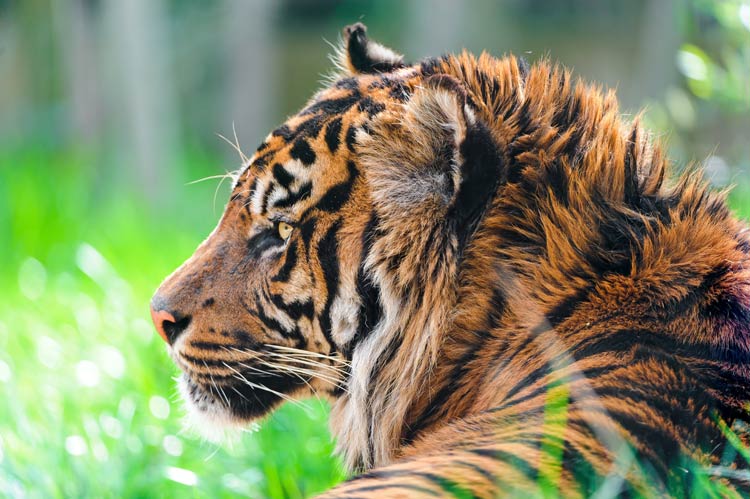
Bengal tiger and the Siberian
While it is true that the Bengal tiger and the Siberian tiger are both large cats, there are some differences in their physical characteristics. The Bengal tiger is native to the Indian subcontinent, while the Siberian tiger is found in Russia. On average, the Bengal tiger is slightly smaller than the Siberian tiger, with males weighing between 200 and 260 kilograms (440 to 570 pounds) and females weighing between 100 and 160 kilograms (220 to 350 pounds). In comparison, Siberian tigers are larger, with males weighing up to 300 kilograms (660 pounds) and females weighing up to 180 kilograms (400 pounds).
There are also differences in the appearance of the two subspecies. Bengal tigers have a shorter coat of fur, with a more orange color and fewer stripes than Siberian tigers. Siberian tigers have a thicker coat of fur, with a paler color and more distinct stripes. In terms of habitat, Bengal tigers are found in a variety of landscapes, including grasslands, forests, and wetlands, while Siberian tigers are found in more temperate forests and taiga.
It is important to note that the size and appearance of individual tigers can vary based on a number of factors, including genetics, diet, and environment. While there are some differences between the Bengal and Siberian subspecies, there is significant overlap in their size and physical characteristics. Both subspecies are endangered, and conservation efforts are ongoing to protect and preserve these iconic animals.

Name Etymology
The word “tiger” comes from the Greek word “tigris,” which means “arrow.” This is believed to be a reference to the speed and agility of the tiger, as well as its ability to strike with precision. The scientific name for the tiger, Panthera tigris, reflects this etymology, with “Panthera” being the name of the genus of big cats to which the tiger belongs, and “tigris” being the species name.
The tiger is also known by a number of other names in various languages and cultures around the world. In Hindi, the national language of India, the tiger is called “bagh,” which means “tiger.” In Chinese, the tiger is known as “hu,” which is a homophone for “protection.” In Japanese, the tiger is called “tora,” which is derived from the Chinese word “tou-lao,” meaning “old tiger.” In Korean, the tiger is called “ho,” which is derived from the Chinese word “hu.”
The tiger has long been revered as a powerful and majestic animal, and its name reflects its status as one of the most feared and respected predators in the world. Despite its cultural and symbolic importance, the tiger is now endangered, with fewer than 4,000 individuals remaining in the wild. Conservation efforts are ongoing to protect and preserve this iconic species.

Evolution of the tiger
The tiger is a member of the Felidae family, which includes all species of cats. Within the family, tigers are classified in the genus Panthera, which also includes lion, leopard, and jaguar. The ancestors of modern tigers probably evolved in Asia, and the first tigers appeared in the fossil record about 2 million years ago.
Over time, tigers evolved to become powerful predators, with strong muscles, sharp teeth and claws, and keen senses. They also developed the ability to camouflage themselves with their distinctive orange and black stripes, which help them to blend in with the grass and forests of their habitat.
Tigers have undergone several changes in their evolutionary history, including the development of new subspecies as they colonized new areas. For example, the Siberian tiger evolved to adapt to the colder climate of the Russian taiga, while the Sumatran tiger evolved to adapt to the rainforests of Sumatra.
Despite their evolutionary success, tigers are now endangered, with fewer than 4,000 individuals remaining in the wild. This is due to a variety of factors, including habitat loss, poaching, and conflict with humans. Conservation efforts are ongoing to protect and preserve these iconic animals.
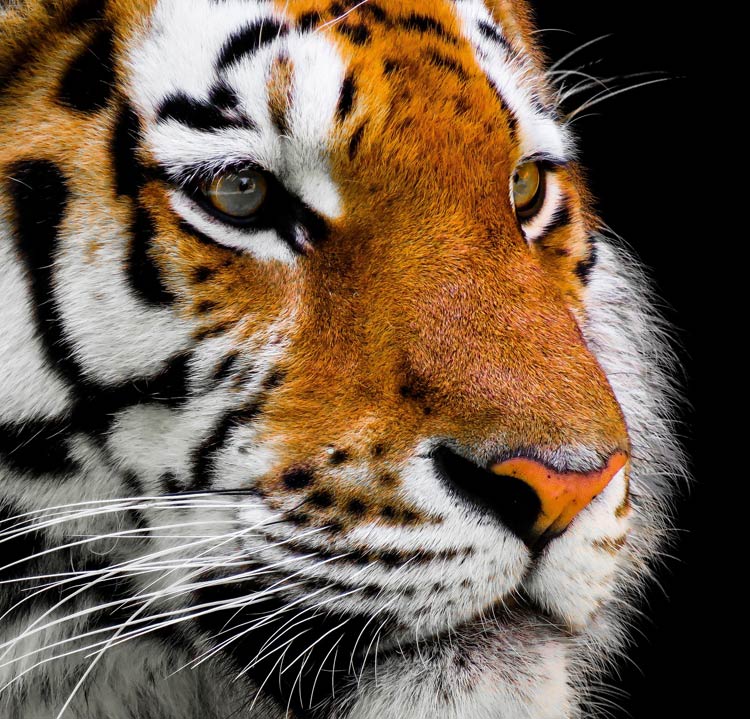
Characteristics
Tigers are large, powerful cats with a number of distinctive characteristics. Some of the most notable characteristics of tigers include:
- Size
Tigers are the largest cat species in the world, with males weighing up to 300 kilograms (660 pounds) and females weighing up to 180 kilograms (400 pounds). They are also among the tallest cats, with some males standing up to 1.2 meters (4 feet) at the shoulder. - Coat
Tigers have a distinctive orange coat that is striped with black. The stripes are unique to each individual tiger, like fingerprints in humans. The coat helps to camouflage the tiger in its natural habitat, allowing it to blend in with the grass and forests. - Teeth and claws
Tigers have sharp teeth and retractable claws, which they use to kill and eat their prey. Their teeth are adapted for tearing and biting, and their claws are used for grasping and holding onto prey. - Strength and agility
Tigers are powerful and agile animals, and are capable of running at speeds of up to 65 kilometers (40 miles) per hour. They are also skilled climbers, and can jump up to 10 meters (33 feet) in a single bound. - Senses
Tigers have excellent senses, including keen vision, hearing, and smell. They use these senses to locate and hunt their prey, and to defend themselves from threats. - Social behavior
Tigers are solitary animals, and typically live and hunt alone. However, they do have a complex social structure, and males and females have separate territories that they defend from other tigers. Tigers come together to mate and raise their young, and may also interact with other tigers in their territory. - Diet
Tigers are carnivorous, and prey on a wide variety of animals, including deer, wild boar, and buffalo. They are skilled hunters, and use their keen senses and stealth to surprise and overpower their prey. - Habitat
Tigers are found in a variety of habitats across much of Asia, including grasslands, forests, and wetlands. They are adaptable animals, and are able to live in a range of environments, although they do require large areas of habitat to support their territorial behavior. - Endangerment
Tigers are endangered, with fewer than 4,000 individuals remaining in the wild. They are threatened by habitat loss, poaching, and conflict with humans, and conservation efforts are ongoing to protect and preserve these iconic animals. - Cultural significance
Tigers have long been revered in many Asian cultures for their strength and beauty, and have played a significant role in the spiritual and cultural traditions of these societies. They are also popular in zoos and wildlife parks around the world, and have become a symbol of conservation efforts to protect endangered species.

Size
Tigers are the largest cat species in the world, with males weighing up to 300 kilograms (660 pounds) and females weighing up to 180 kilograms (400 pounds). They are also among the tallest cats, with some males standing up to 1.2 meters (4 feet) at the shoulder. The size of an individual tiger can vary based on a number of factors, including genetics, diet, and environment.
There are some differences in size among the different subspecies of tiger. For example, the Siberian tiger is the largest subspecies, with males weighing up to 300 kilograms (660 pounds) and females weighing up to 180 kilograms (400 pounds). In comparison, the Bengal tiger, which is found in India, Nepal, Bhutan, and Bangladesh, is slightly smaller, with males weighing between 200 and 260 kilograms (440 to 570 pounds) and females weighing between 100 and 160 kilograms (220 to 350 pounds). The Sumatran tiger is the smallest subspecies, with males weighing between 100 and 140 kilograms (220 to 310 pounds) and females weighing between 75 and 110 kilograms (165 to 240 pounds).
Despite their size, tigers are agile and powerful animals, and are capable of running at speeds of up to 65 kilometers (40 miles) per hour. They are also skilled climbers, and can jump up to 10 meters (33 feet) in a single bound.

Color variations
Tigers are known for their distinctive orange coat, which is striped with black. The orange coloration of a tiger’s coat is due to the presence of pigment cells called pheomelanin. The black stripes are due to the presence of another pigment called eumelanin. The combination of these pigments creates the unique pattern of stripes that is characteristic of tigers.
The color and pattern of a tiger’s coat can vary slightly depending on the subspecies and the individual tiger. For example, the Bengal tiger, which is found in India, Nepal, Bhutan, and Bangladesh, has a shorter coat of fur with a more orange color and fewer stripes than the Siberian tiger, which is found in Russia. The Siberian tiger has a thicker coat of fur with a paler color and more distinct stripes.
There are also some rare color variations of tigers that have been observed in the wild and in captivity. These include white tigers, which have a white coat with black stripes, and golden tigers, which have a golden-yellow coat with black stripes. These variations are caused by genetic mutations, and are relatively rare. White tigers are not a separate subspecies, and are found within the Bengal tiger subspecies. Golden tigers are even rarer, and have only been observed in captivity.
Despite these variations, all tigers are part of the same species, Panthera tigris, and share many of the same physical and behavioral characteristics.

Distribution and habitat
Tigers are found in a variety of habitats across much of Asia, including grasslands, forests, and wetlands. They are native to the Indian subcontinent, Russia, China, Southeast Asia, and the Korean Peninsula.
The distribution of tigers varies among the different subspecies. For example, the Bengal tiger is found in India, Nepal, Bhutan, and Bangladesh, while the Siberian tiger is found in Russia. The South China tiger is found in China, while the Indochinese tiger is found in Thailand, Laos, Vietnam, and Cambodia. The Malayan tiger is found in Malaysia, and the Sumatran tiger is found in Sumatra, Indonesia.
Tigers are adaptable animals, and are able to live in a range of environments, including dense forests, grasslands, and wetlands. However, they do require large areas of habitat to support their territorial behavior, and are threatened by habitat loss, as well as poaching and conflict with humans.
Tigers are endangered, with fewer than 4,000 individuals remaining in the wild. Conservation efforts are ongoing to protect and preserve these iconic animals and their habitats.

Behavior and ecology
Social and daily activities
Tigers are solitary animals, and typically live and hunt alone. They have a complex social structure, with males and females living in separate territories that they defend from other tigers. Tigers come together to mate and raise their young, and may also interact with other tigers in their territory.
Tigers are carnivorous, and prey on a wide variety of animals, including deer, wild boar, and buffalo. They are skilled hunters, and use their keen senses and stealth to surprise and overpower their prey. They are also strong and agile animals, and are capable of running at speeds of up to 65 kilometers (40 miles) per hour.
Tigers are mostly active at night, and spend the majority of their time resting and sleeping during the day. They are excellent climbers, and may spend time climbing trees in search of prey or to escape predators. They are also good swimmers, and may swim across rivers or lakes to hunt or to escape threats.
Tigers have a strong social bond with their cubs, and females will invest a significant amount of time and energy in raising their young. Female tigers give birth to litters of 2-4 cubs, and will care for and protect them for up to 2 years. During this time, the cubs will learn important survival skills, such as hunting and avoiding predators.
Despite their solitary nature, tigers do have a complex social structure, and may communicate with one another through a variety of vocalizations and body language. They are also intelligent and adaptable animals, and are able to learn and adapt to new environments and challenges.

Hunting and diet
Tigers are carnivorous, and prey on a wide variety of animals, including deer, wild boar, and buffalo. They are skilled hunters, and use their keen senses and stealth to surprise and overpower their prey. They are also strong and agile animals, and are capable of running at speeds of up to 65 kilometers (40 miles) per hour.
Tigers are mostly active at night, and use their excellent vision, hearing, and smell to locate and track their prey. They are ambush predators, and will often wait quietly in cover until their prey comes within striking range. When they attack, they use their sharp teeth and claws to kill and eat their prey.
Tigers are opportunistic hunters, and will prey on a wide range of animals depending on what is available in their habitat. They are also adaptable, and may alter their hunting behavior based on the type of prey they are targeting. For example, they may use different strategies to hunt large herbivores versus smaller prey.
Tigers have a varied diet, and will eat a wide range of animals, including deer, wild boar, buffalo, antelope, and even fish and birds. They will also scavenge for food if necessary, and may eat carrion if prey is scarce.
Tigers require a large amount of food to support their size and metabolism, and can eat up to 30 kilograms (66 pounds) of meat in a single day. They will often cache their prey, burying it in leaves or soil to save for later.
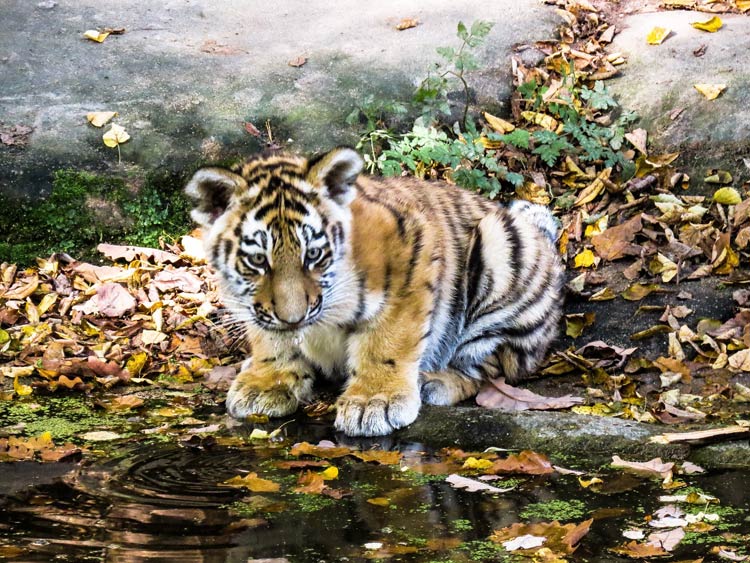
Reproduction and life cycle
Tigers reach sexual maturity at around 3-4 years of age, and females are capable of giving birth to litters of 2-4 cubs. Mating season for tigers can vary depending on the subspecies and the location, but it generally occurs between late fall and early spring.
During the mating process, males and females will come together and mate multiple times over a period of several days. After mating, the female will give birth to a litter of cubs after a gestation period of approximately 105 days.
Cubs are born blind and weigh only about 1.5 kilograms (3.3 pounds). They are dependent on their mother for food and protection, and will nurse for several months before beginning to eat solid food. Female tigers are fiercely protective of their cubs, and will spend a significant amount of time and energy caring for and protecting them.
Cubs will remain with their mother for up to 2 years, during which time they will learn important survival skills, such as hunting and avoiding predators. Once they are old enough to fend for themselves, they will leave their mother and establish their own territories.
Tigers can live for up to 15-20 years in the wild, although their lifespan can vary depending on a variety of factors, including genetics, diet, and environment.

Enemies and competitors
Tigers have few natural enemies, as they are at the top of the food chain in their habitat. However, they may face competition from other large predators, such as Asiatic lions, leopards, and bears, for access to food and territory.
Tigers may also face threats from humans, including habitat loss, poaching, and conflict with farmers and livestock owners. In some areas, tigers may attack and kill humans, either as a result of being provoked or as a result of being attracted to easy prey.
Threats
Tigers face a number of threats, including habitat loss, poaching, and conflict with humans. Some of the main threats to tigers are:
- Habitat loss
Tigers require large areas of habitat to support their territorial behavior and hunting needs. However, their habitat is being lost or degraded due to a variety of factors, including deforestation, agriculture, urbanization, and infrastructure development. As a result, tigers are being squeezed into smaller and more fragmented areas, which can make it difficult for them to find food and mates. - Poaching
Tigers are often targeted for their body parts, which are used in traditional medicine, as well as for their skins and bones, which are used for decorative purposes. Poaching is a major threat to tigers, and has contributed to their decline in many parts of their range. - Conflict with humans
Tigers may come into conflict with humans when they attack livestock or prey on domestic animals. In some cases, humans may retaliate by killing the tiger, or by intentionally or unintentionally trapping or poisoning the animal. Human-tiger conflict can also occur when tigers attack humans, either as a result of being provoked or as a result of being attracted to easy prey.
Conservation efforts are ongoing to protect and preserve tigers and their habitats. These efforts include measures to reduce habitat loss, combat poaching, and reduce conflict with humans. Despite these efforts, tigers remain endangered, with fewer than 4,000 individuals remaining in the wild.

Conservation
Tigers are endangered, with fewer than 4,000 individuals remaining in the wild. Conservation efforts are ongoing to protect and preserve these iconic animals and their habitats. Some of the main strategies used to conserve tigers include:
- Protecting habitat
One of the most important strategies for conserving tigers is to protect and preserve their habitats. This includes measures such as establishing protected areas, such as national parks and wildlife reserves, and working with local communities to manage and conserve natural resources. - Reducing poaching
Poaching is a major threat to tigers, and efforts are being made to combat it through a variety of measures, including increased law enforcement, education, and community outreach. - Reducing conflict with humans
When tigers come into conflict with humans, it can lead to negative consequences for both humans and tigers. Efforts are being made to reduce this conflict through a variety of measures, including education, community outreach, and the use of measures such as fencing and livestock guarding dogs to protect livestock. - Captive breeding and reintroduction
In some cases, tigers may be bred in captivity and then released into the wild to help increase the wild population. Reintroduction efforts can be complex, and require careful planning and management to ensure the success of the released animals. - Education and awareness
Raising awareness about the importance of conserving tigers and their habitats is an important part of conservation efforts. This includes educating local communities about the value of tigers and the need to protect them, as well as raising awareness among the general public about the issues facing tigers and the importance of conservation.
Overall, the goal of conservation efforts for tigers is to ensure the survival and recovery of the species in the wild, and to protect and preserve their habitats for future generations.

Relation with humans
Tigers have a long and complex relationship with humans, and have played a significant role in the cultural and spiritual traditions of many Asian societies. In some cultures, tigers are revered as powerful and fearsome animals, and are often depicted in art and folklore.
However, tigers have also posed a threat to humans in some cases, either as a result of being provoked or as a result of being attracted to easy prey. In some areas, tigers may attack and kill humans, leading to conflict between humans and tigers.
In recent years, efforts have been made to reduce human-tiger conflict through a variety of measures, including education, community outreach, and the use of measures such as fencing and livestock guarding dogs to protect livestock.
Despite the potential for conflict, tigers also play a vital role in the ecosystem, and are important indicators of the health of their habitat. As such, conservation efforts are ongoing to protect and preserve these iconic animals and their habitats.

Tiger hunting, poaching
Tigers have long been hunted by humans for their body parts, which are used in traditional medicine, as well as for their skins and bones, which are used for decorative purposes. Poaching is a major threat to tigers, and has contributed to their decline in many parts of their range.
Tiger hunting and poaching has been illegal in most countries for many years, but these activities continue to be a problem due to the high demand for tiger products and the lack of effective law enforcement. Poaching is often driven by organized crime syndicates, and can be difficult to combat.
Efforts to combat poaching include increased law enforcement, education, and community outreach, as well as measures to reduce demand for tiger products. In some cases, wildlife conservation organizations may work with local communities to provide alternative livelihoods and to promote the value of tigers as a natural resource.
Despite these efforts, poaching remains a significant threat to tigers, and continues to pose a challenge to conservation efforts. It is important to continue to work to combat this illegal activity in order to protect and preserve these iconic animals and their habitats.
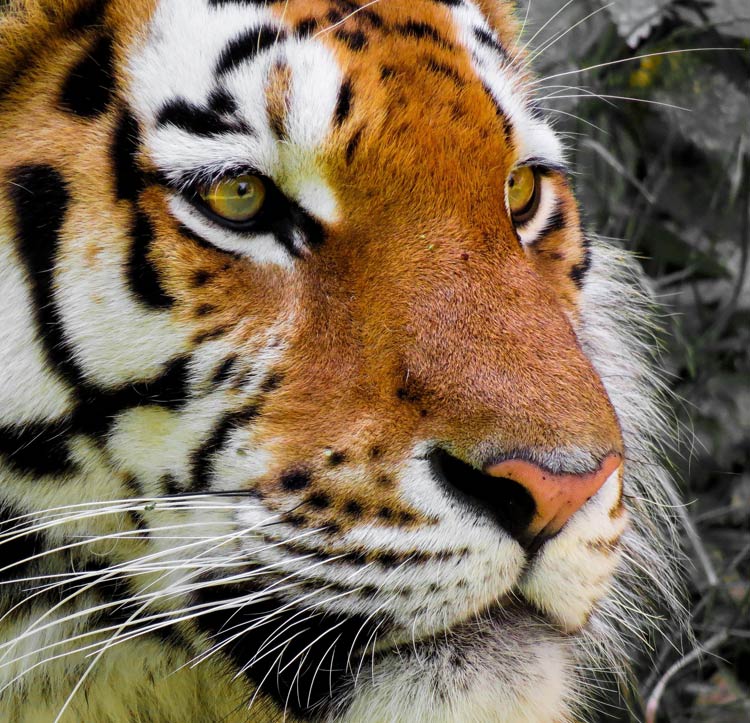
Tiger Body part use
Tigers have been hunted by humans for their body parts, which have been used in traditional medicine and for decorative purposes. The demand for tiger products has contributed to the decline of the species in many parts of their range.
Tiger body parts have been used for a variety of purposes, including:
- Traditional medicine
Tiger body parts, including bones, teeth, and claws, have been used in traditional medicine systems in Asia for centuries. Tiger products are believed to have a range of medicinal properties, and are used to treat a variety of ailments. - Decorative purposes
Tiger skins and bones have also been used for decorative purposes, and are often highly prized as status symbols. Tiger skins are used to make rugs and other decorative items, and tiger bones are used to make jewelry and other decorative objects. - Food
In some cultures, tiger meat is considered a delicacy, and is consumed as food.
The trade in tiger body parts is illegal in most countries, and is regulated by international treaties, such as the Convention on International Trade in Endangered Species of Wild Fauna and Flora (CITES). Despite these measures, the illegal trade in tiger products continues to be a problem, and is a major threat to the survival of the species.
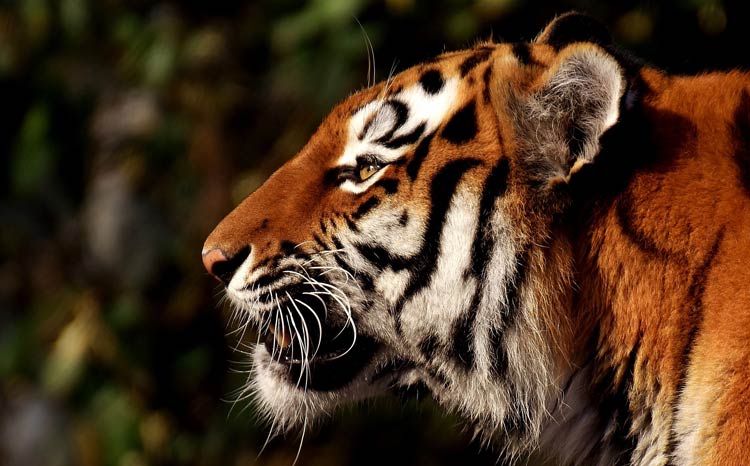
Man-eating tigers
Tigers are usually solitary and territorial animals, and will generally avoid humans. However, in some cases, tigers may attack and kill humans, either as a result of being provoked or as a result of being attracted to easy prey. When tigers attack and kill humans, they are often referred to as “man-eaters.”
Man-eating tigers can pose a significant threat to human communities, and can lead to conflict between humans and tigers. In some cases, humans may retaliate by killing the tiger, or by intentionally or unintentionally trapping or poisoning the animal.
There are a number of factors that may contribute to the development of man-eating behavior in tigers. These may include:
- Injuries or health problems that make it difficult for the tiger to hunt its usual prey.
- A shortage of natural prey, leading the tiger to seek out alternative sources of food.
- Human interference with the tiger’s habitat or prey, causing the tiger to come into closer contact with humans.
- Old age or infirmity, which may make it difficult for the tiger to hunt effectively.
Overall, man-eating tigers are relatively rare, but they can pose a significant threat to human communities. Efforts are being made to reduce human-tiger conflict through a variety of measures, including education, community outreach, and the use of measures such as fencing and livestock guarding dogs to protect livestock.

Famous Man-eating tigers
There have been several cases of man-eating tigers that have received significant attention in the media. Some of the more well-known examples include:
- The Champawat Tiger
This Bengal tiger, which was believed to have killed more than 200 people in Nepal and India between 1900 and 1907, was eventually shot and killed by Jim Corbett, a British hunter and conservationist. Corbett’s book “The Man-Eating Leopard of Rudraprayag” tells the story of his hunt for the Champawat Tiger. - The Thak Man-Eater
This Bengal tiger, which was believed to have killed over 125 people in India between 1918 and 1926, was eventually shot and killed by Jim Corbett. Corbett’s book “The Man-Eating Leopard of Rudraprayag” tells the story of his hunt for the Thak Man-Eater. - The Shikaripara Man-Eater
This Bengal tiger, which was believed to have killed over 60 people in India between 1907 and 1910, was eventually shot and killed by Jim Corbett. Corbett’s book “The Man-Eating Leopard of Rudraprayag” tells the story of his hunt for the Shikaripara Man-Eater. - The Kumaon Man-Eater
This Bengal tiger, which was believed to have killed over 125 people in India between 1890 and 1907, was eventually shot and killed by Jim Corbett. Corbett’s book “The Man-Eating Leopard of Rudraprayag” tells the story of his hunt for the Kumaon Man-Eater.
These examples illustrate the serious threat that man-eating tigers can pose to human communities, and the efforts that have been taken to address this threat.

Tigers in captivity
Tigers can be kept in captivity in a variety of settings, including zoos, wildlife sanctuaries, and private collections. In captivity, tigers are typically kept in enclosures that are designed to mimic their natural habitat as closely as possible, and are provided with food, water, and medical care.
The keeping of tigers in captivity is regulated by national and international laws, which vary depending on the country. In many cases, it is illegal to keep tigers as pets, and they can only be kept in captivity by licensed facilities, such as zoos or wildlife sanctuaries.
There are a number of reasons why tigers may be kept in captivity, including:
- Conservation
In some cases, tigers may be kept in captivity as part of conservation efforts, either as part of a breeding program to increase the population, or as a way to protect and care for injured or orphaned animals. - Education
Tigers can be used as a way to educate the public about conservation and the importance of protecting these animals. - Entertainment
Tigers are popular attractions in zoos and other facilities, and may be used for entertainment purposes, such as in circuses or other performance settings.
Overall, the keeping of tigers in captivity is a complex issue, and there are differing views on the ethics and welfare implications of keeping these animals in captivity. It is important to ensure that tigers are kept in appropriate and humane conditions, and that any decisions about their care and management are made with their welfare and conservation in mind.

Tigers in cultural
Tigers have played a significant role in the cultural and spiritual traditions of many societies around the world. In many cultures, tigers are revered as powerful and fearsome animals, and are often depicted in art and folklore.
Here are a few examples of how tigers have been revered in different cultural traditions:
- In Hinduism
the goddess Durga is often depicted riding on a tiger, symbolizing her power and strength. - In Chinese culture
tigers are seen as a symbol of strength, courage, and good luck, and are often depicted in art and literature. - In Korean culture
tigers are seen as powerful and protective animals, and are often depicted on traditional clothing and in art. - In Native American cultures
tigers are often seen as powerful and spiritual animals, and are revered as symbols of strength and courage. - In Japanese culture
tigers are seen as powerful and fearsome animals, and are often depicted in art and literature.
Tigers have played a significant role in the cultural traditions of many societies, and have been revered as powerful and respected animals.
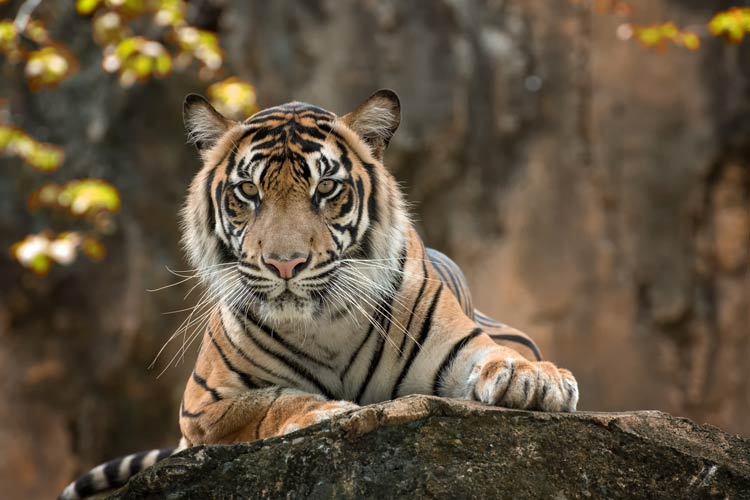
Tigers in movies
Tigers have been featured in a number of movies over the years, often as symbols of power and strength. Here are a few examples of movies that feature tigers:
- “Life of Pi”
This 2012 film, based on the novel of the same name, tells the story of a young Indian boy who survives a shipwreck and is stranded on a lifeboat with a Bengal tiger. - “The Jungle Book”
This classic animated film, which was released in 1967, features a Bengal tiger named Shere Khan as one of the main characters. - “The Tiger: An Old Hunter’s Tale”
This 2015 South Korean film tells the story of an aging hunter who is tasked with capturing a ferocious man-eating tiger. - “The White Tiger”
This 2021 film, based on the novel of the same name, tells the story of a young man who rises from poverty to become a successful entrepreneur, with the help of a powerful white tiger. - “Tiger”
This 2021 film tells the story of a young boy who forms a bond with a Bengal tiger while growing up in the Indian jungle.
Tigers have been featured in a variety of movies over the years, and have played a range of roles, from fierce predators to powerful and revered animals.

Tiger population
Tigers are endangered, with fewer than 4,000 individuals remaining in the wild. The tiger population has declined significantly in recent years due to a variety of factors, including habitat loss, poaching, and conflict with humans.
There are nine recognized subspecies of tigers, and the population of each subspecies varies. Here is a summary of the current population estimates for each subspecies:
- Bengal tiger
There are an estimated 2,500 Bengal tigers remaining in the wild. The Bengal tiger is found in India, Nepal, Bhutan, and Bangladesh, and is the most common subspecies of tiger. - Siberian (Amur) tiger
There are an estimated 500 Siberian tigers remaining in the wild. The Siberian tiger is found in Russia, and is the largest subspecies of tiger. - South China tiger
There are an estimated 50 South China tigers remaining in the wild. The South China tiger is found in China, and is the most critically endangered subspecies of tiger. - Sumatran tiger
There are an estimated 500 Sumatran tigers remaining in the wild. The Sumatran tiger is found on the Indonesian island of Sumatra, and is the smallest subspecies of tiger. - Indochinese tiger
There are an estimated 1,000 Indochinese tigers remaining in the wild. The Indochinese tiger is found in Cambodia, China, Laos, Myanmar, Thailand, and Vietnam. - Malayan tiger
There are an estimated 600 Malayan tigers remaining in the wild. The Malayan tiger is found in Malaysia and is a recently recognized subspecies of tiger. - Caspian tiger
- The Caspian tiger is extinct, with the last known individual being killed in the 1970s. The Caspian tiger was once found in a range that included parts of Iran, Iraq, Kazakhstan, Turkmenistan, and Afghanistan.
- Javan tiger
The Javan tiger is extinct, with the last known individual being killed in the 1980s. The Javan tiger was once found on the Indonesian island of Java.

Conservation efforts
Conservation efforts are ongoing to protect and preserve tigers and their habitats, and to try to increase the population of these iconic animals. Some of the main strategies used to conserve tigers include protecting habitat, reducing poaching, reducing conflict with humans, and captive breeding and reintroduction.
Despite these efforts, tigers continue to face significant threats, and the future of the species remains uncertain. It is important to continue to work to protect and preserve tigers and their habitats in order to ensure the survival of these magnificent animals.

White tigers
White tigers are a rare color variation of the Bengal tiger, and are characterized by their white fur and blue eyes. White tigers are not a separate subspecies of tiger, but rather a result of a genetic mutation that occurs occasionally in the Bengal tiger population.
White tigers are quite rare, and are not found in the wild. They are only found in captivity, where they have been bred for their distinctive white color. There is some debate about the ethics of breeding white tigers, as the mutation that causes their white color is also associated with a number of health problems, including vision and hearing impairments, and a higher susceptibility to infections.
Despite their popularity as exotic animals, white tigers face a number of challenges in captivity. They may have difficulty finding mates due to their rare coloration, and may also have difficulty competing with normal-colored tigers for resources.
Overall, white tigers are an interesting and unique variation of the Bengal tiger, but their rare coloration has also brought them attention from those who seek to exploit them for profit. It is important to ensure that white tigers are treated with care and respect, and that their welfare and conservation needs are taken into account.

Zoo accidents
There have been several instances of accidents involving tigers at zoos and other facilities. These accidents can occur for a variety of reasons, including human error, equipment failure, and animal behavior.
Here are a few examples of accidents involving tigers at zoos:
- In 2016
A zookeeper at the Hamerton Zoo Park in Cambridgeshire, England, was killed by a tiger after entering the animal’s enclosure. - In 2013
A female visitor to the Beijing Wildlife Park was killed by a tiger after exiting her vehicle in a restricted area. - In 2003
A zookeeper at the San Francisco Zoo was mauled by a Siberian tiger after the animal escaped from its enclosure. - In 1996
A zookeeper at the Cincinnati Zoo was killed by a Siberian tiger after entering the animal’s enclosure to clean it.
These accidents highlight the importance of maintaining strict safety protocols when working with or visiting animals in zoos and other facilities. It is important to follow all safety guidelines and to respect the animals’ boundaries to avoid accidents and injuries.
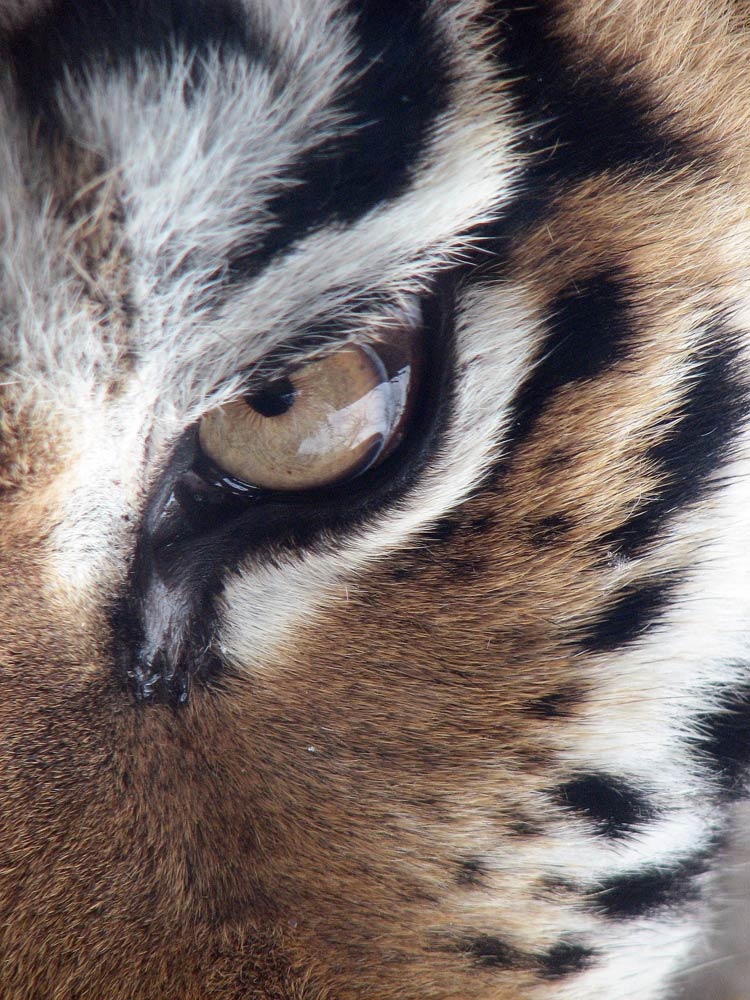
Tigers – interesting facts
- Tigers are the largest species of cat in the world, and can reach lengths of up to 10 feet (3 meters) and weigh up to 660 pounds (300 kilograms).
- Tigers are solitary animals, and are generally only found in the company of other tigers when they are mating or raising their young.
- Tigers are skilled hunters, and are able to take down large prey, such as deer, wild pigs, and even elephants.
- Tigers have distinctive orange and black stripes, which help to camouflage them in the tall grasses of their habitat.
- Tigers are endangered, with fewer than 4,000 individuals remaining in the wild. The main threats to tigers include habitat loss, poaching, and conflict with humans.
- Tigers are found in a variety of habitats, including tropical rainforests, deciduous forests, grasslands, and mangrove swamps.
- There are nine recognized subspecies of tigers, including the Bengal tiger, Siberian tiger, South China tiger, Sumatran tiger, Indochinese tiger, Malayan tiger, Caspian tiger, Javan tiger, and Amur tiger.
- Tigers are cultural symbols in many societies, and have been revered as powerful and revered animals in art, literature, and folklore.
- Tigers are excellent swimmers, and are often found near water sources in their habitat.
- Tigers are known for their powerful roar, which can be heard from up to two miles (three kilometers) away.
- Tigers have retractable claws, which they use to help them climb trees and capture prey.
- Tigers have a lifespan of around 10-15 years in the wild, but can live up to 20 years in captivity.
- Female tigers give birth to litters of up to six cubs, which they raise on their own. Tiger cubs are born blind and weigh only around two pounds (one kilogram), but grow quickly and become independent at around two years of age.
- Tigers are social animals, and have a complex system of communication, including vocalizations, body language, and scent marking.
- Tigers are apex predators, and play a crucial role in maintaining the balance of their ecosystem. They help to control the populations of other animals, and their presence can have a ripple effect on the entire ecosystem.

Tigers – Q&A
Q: What is a tiger?
A: A tiger is a large carnivorous cat native to Asia.
Q: How many subspecies of tiger are there?
A: There are six subspecies of tiger: Bengal, Indochinese, Malayan, Siberian, South China, and Sumatran.
Q: What is the average weight of a tiger?
A: The average weight of a tiger is around 600 pounds (270 kg) for males and 300 pounds (140 kg) for females.
Q: What do tigers eat?
A: Tigers are carnivores and primarily eat large mammals such as deer, wild pigs, and water buffalo.
Q: Are tigers endangered?
A: Yes, tigers are currently endangered. According to the World Wildlife Fund, the global wild tiger population has declined by about 96% over the last century, with only around 3,900 individuals remaining in the wild.
Q: What is being done to protect tigers?
A: Conservation efforts are being made to protect tigers, including habitat protection and restoration, anti-poaching patrols, and captive breeding programs. Additionally, there are efforts to reduce human-tiger conflict and to increase public awareness about the importance of tiger conservation.
Q: What is the largest subspecies of tiger?
A: The largest subspecies of tiger is the Siberian tiger.
Q: What is the smallest subspecies of tiger?
A: The smallest subspecies of tiger is the Sumatran tiger.
Q: What is the natural habitat of tigers?
A: Tigers are native to Asia and can be found in a variety of habitats including tropical and subtropical forests, grasslands, and wetlands. They are also found in different types of environments such as rainforests, deciduous forests, and mangrove swamps.
Q: How do tigers communicate?
A: Tigers communicate through a variety of means including vocalizations such as roars, grunts, and moans, as well as through scent marking and visual cues such as body language and marking trees with their claws.
Q: How long do tigers live?
A: Tigers can live for around 15 years in the wild, and up to 20 years in captivity.
Q: Can tigers swim?
A: Yes, tigers are very good swimmers and are known to swim across rivers and lakes in search of prey or to escape danger.
Q: Are there white tigers?
A: White tigers are a genetic variant of the Bengal tiger and are not a separate subspecies. They are extremely rare in the wild, with only around 200 individuals remaining in captivity.
Q: Why do tigers have stripes?
A: Tigers have stripes on their fur as a form of camouflage. The stripes help them blend in with their surroundings and make it difficult for prey to spot them when hunting.
Q: How do tigers hunt?
A: Tigers are solitary hunters and typically stalk their prey before launching a surprise attack. They use their powerful legs and large paws to overpower their prey and deliver a fatal bite to the neck or throat. Tigers are also known to use their strong swimming abilities to catch fish and other aquatic animals.
Q: How do tigers reproduce?
A: Tigers reach sexual maturity at around 3-4 years of age. Female tigers have a gestation period of around 105 days and typically give birth to litters of 2-3 cubs. Cubs are born blind and weigh around 2-3 pounds (1-1.5 kg). They are dependent on their mother for food and protection for the first 18-24 months of their lives.
Q: Are there any cultural or religious significance of tigers?
A: Tigers hold a significant place in many cultures and religions around the world. In ancient China, tigers were seen as a symbol of power and courage. In Hinduism, the god of war and preservation, Lord Shiva, is often depicted with a tiger or tiger skin. In some cultures, the tiger is seen as a protector and guardian spirit, while in others it is seen as a symbol of destruction and evil.
Q: What is the main threat to tigers today?
A: The main threats to tigers today include habitat loss and fragmentation, poaching for their fur and body parts, and human-tiger conflict. Climate change also poses a growing threat to tiger populations as it alters the distribution and availability of their prey.

Recommended
- Siberian tiger
- Bengal tiger
- Sumatran tiger
- Indochinese tiger
- Malayan tiger
- South China tiger
- Tigers
- White tigers
- Lions
- White lions
- Lion vs tiger
- Liger
- Animal fights
- American lion
- European cave lion
- Smilodon – Saber-toothed tiger
- Fights of animals
- Big cats
- Black panther
- Leopard
- Snow leopard
- African Lion
- Fastest animals
- Fastest birds

